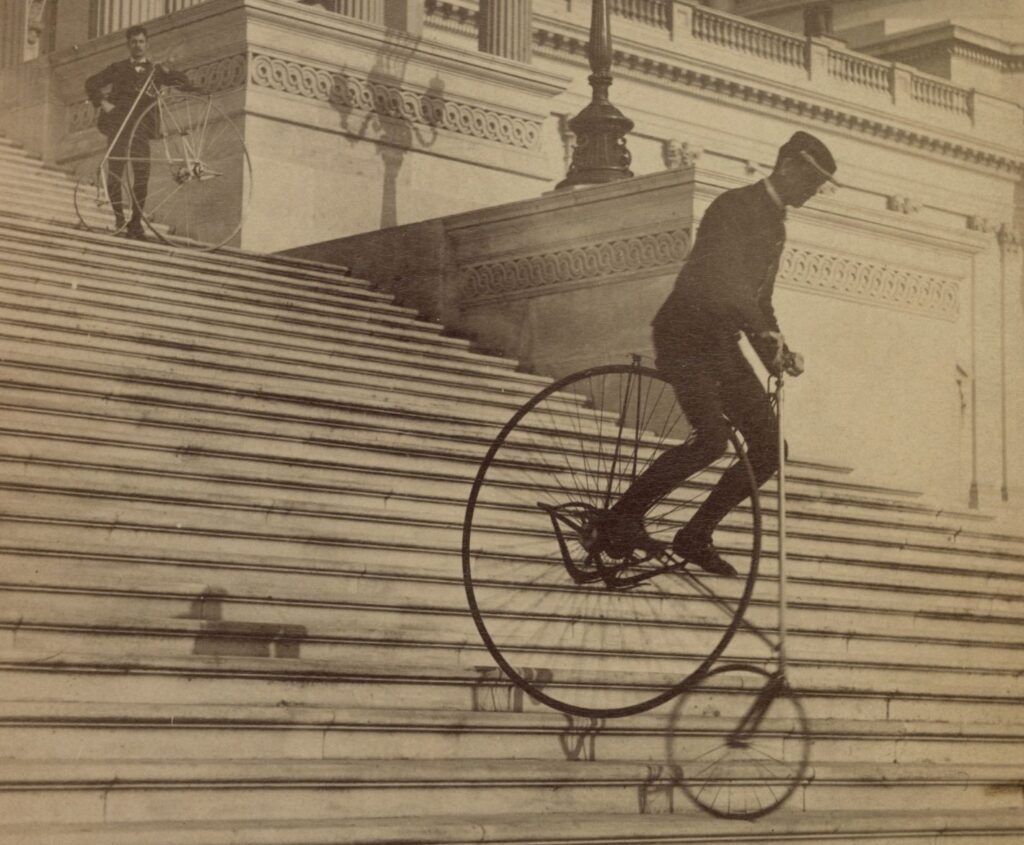
To dedicated cyclists or runners, Zwift is a valuable training tool; to others, it may be little more than a gimmick, or Peloton’s cheaper relative. So what’s the appeal, really?
About the game
Cycling and running sucks in the winter. It may be OK for an occasional ride or a parkrun – but if you need anything more, you’re about to feel colder and much less safe out there.
Zwift is an indoor cycling and running simulator. It works with a range of bike appliances and treadmills, and on a variety of devices. Once you’ve set it up, Zwift allows you to go for a ride or a run indoors, guiding your avatar through virtual worlds and recording your progress.
The landscapes range from realistic (I could more or less follow the London Olympic route turn-by-turn, just as I would in real life) to wacky (Watopia is a delightful land created by a cycle maniac after one too many coffee stops). They’re criss-crossed by routes of varying length and difficulty, so you’re unlikely to get bored with these.
Other Zwifters (Zwift users) make it more fun: group rides or runs are possible, as are races. You can chat, or leave a Zwift equivalent of a “like” to others you pass by – and you can follow other Zwifters, if the social aspect motivates you.
If you’re in it for the stats and serious workouts, Zwift’s got you covered, too. This winter’s best investment was a “smart” trainer for my bicycle: it reads out my power in watts, and increases or decreases my pedalling difficulty based on what the workout or the landscape dictates. It’s still possible to get a structured workout done with a more basic setup, though. Zwift’s library of workouts and training plans is impressive.
About what it taught me
The obvious benefit is being able to train in a structured, intensive way, even in the off-season. I don’t want to get into the weeds here, so just a summary: Zwift allows me to spend 5-7 hours on my bike every week, and make every minute count towards my training plan. This means I’m getting stronger and my endurance is improving.
The second benefit, connected to the first, is being able to retain my motivation. Zwift looks good, is easy to use, and gives me the little moments of social gratification. You may say it’s a shortcut, and complain about the curse of “gamified everything”. I’ll simply say that Zwift makes indoor cycling less boring, and helps me get some happy training hours in, without the stress of after-dark, sub-zero, rush-hour cycling.
Lastly: being able to measure and instantly check my performance means I’m able to better gauge what I’m capable of, and what’s still out of reach. There are obviously different ways of achieving this – but riding outdoors in the warmer months is, I think, best spent on just enjoying the thrill of a day-long ride without having to gaze at a power meter every second. Zwift is providing a rich layer of data on top of the winter of my discontent, and letting me see what works, what doesn’t, what hurts, and where to push myself. This is useful conditioning for the summer show-time events.
Not just me?
Indoor cyclists are basically larger versions of laboratory mice, and putting a well-electroded subject on a bike or a treadmill is a hallowed sports science tradition. So it’s no surprise that we managed to find out that indoor cycling is good for you.
As for gamification, much depends on who you ask and what you study. Some research will suggest that every penny spent on gamifying something is a waste – another paper will convince you to go for it. This study seems to show that gamification can at least have a positive effect on motivation, even if your intrinsic motivation (how you feel about the task) doesn’t change much.
What it will cost you
Zwift charges a monthly subscription, but that’s the least of your worries. This stuff’s pricey! For cycling, you need to find a way to connect your bicycle to your tablet/phone/computer, and to measure your speed/cadence. This means a trainer, some sensors, and a bike – in a budget scenario. Smart trainers cost even more. For runners, a treadmill is necessary. Zwift will run on many phones, tablets, Macs and PCs.
Book pairing
Marquis de Sade? No, seriously – Michel Foucault’s “Technologies of the Self” is a useful, if convoluted, analysis of the political, mental and emotional processes which led us to think of ourselves as improvable and knowable – and underpin many a Zwifter’s motivation. Haruki Murakami’s “What I Talk About When I Talk About Running” does a lot of this, too, but with more warmth and less pretence.
Music pairing
Anything that makes you feel like you’re enjoying the workout. My go-tos are two podcasts these days: KEXP’s The Runcast and Purified Radio by Nora en Pure. There isn’t much of a soundtrack in Zwift, and the soundscapes of the worlds you visit veer from forgettable to frankly annoying.
What else to play
You’d think there aren’t any other games I could recommend to a cyclist or a runner. You’d be wrong. “Zombies, Run!” is a fitness-based game – running, jogging, or walking helps you progress. It was written by Naomi Alderman, who is A-Ma-Zing.
This post is part of “100 games, and what they taught me” – a series of short essays about the games I play and the things I learn from them.
(Photo by Library of Congress on Unsplash)

I am an editor, author, translator and teacher based in the UK.
I am always looking to get involved in new projects. My areas of expertise:
ELT publishing – print and digital
Language learning
Translation – POL-ENG-POL, non-fiction
Editorial project management
Does it look like we could work together? Download my CV or get in touch via e-mail.